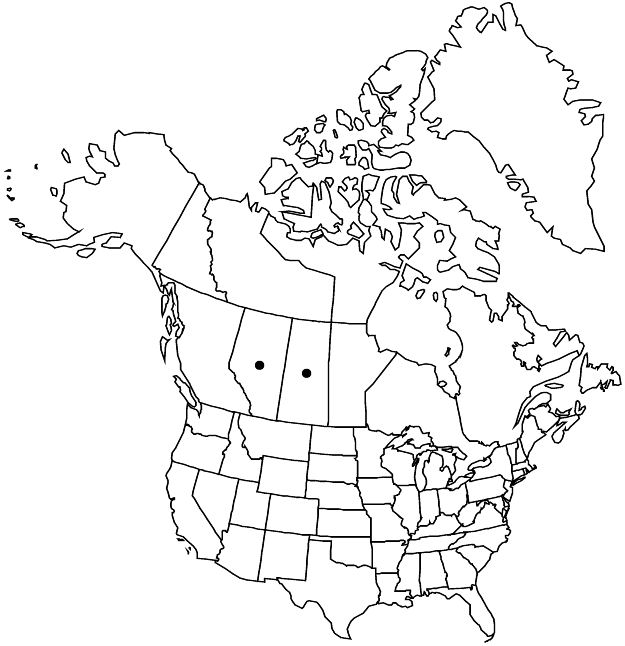Difference between revisions of "Crataegus rubribracteolata"
J. Bot. Res. Inst. Texas 1: 1073, plates 6.1c, 7.3c, fig. 20. 2007.
FNA>Volume Importer |
imported>Volume Importer |
||
| (One intermediate revision by the same user not shown) | |||
| Line 52: | Line 52: | ||
|publication year=2007 | |publication year=2007 | ||
|special status=Endemic | |special status=Endemic | ||
| − | |source xml=https:// | + | |source xml=https://bitbucket.org/aafc-mbb/fna-data-curation/src/2e0870ddd59836b60bcf96646a41e87ea5a5943a/coarse_grained_fna_xml/V9/V9_880.xml |
|subfamily=Rosaceae subfam. Amygdaloideae | |subfamily=Rosaceae subfam. Amygdaloideae | ||
|tribe=Rosaceae tribe Gillenieae | |tribe=Rosaceae tribe Gillenieae | ||
Latest revision as of 23:00, 5 November 2020
Shrubs, erect, multi-stemmed in open, wide branching in shade, 20–30 dm. Stems: expanding bud-scales bright rufous-red; twigs: new growth color not recorded, appressed-pubescent, 1-year old mid brown, 2-years old dark red-brown, older gray or dark gray; thorns on twigs usually numerous, straight to slightly curved, 1-year old dark blackish brown, ± stout, 3.5–5.5 cm. Leaves: petiole length 30–35% blade, densely pubescent in adaxial sulcus, ± sessile-glandular; blade ± ovate to ovate-trullate, 4–7 cm, ± thin, base cuneate to broadly cuneate, lobes (4 or)5 or 6 per side, sinuses moderately deep, max LII 25–33%, lobe apex acute to acuminate, margins with regular, acute teeth, often subacute mature, veins (5 or)6 or 7 per side, apex acute to acuminate, abaxial surface glabrous except for sparse hairs along midvein proximally, adaxial ± densely scabrous-pubescent young (variably persistent to maturity). Inflorescences (6–)8–12-flowered; branches ± tomentose; bracteoles abundant, deep orange-red or fading, narrow, margins densely sessile-glandular. Flowers 12–15 mm diam.; hypanthium ± tomentose or densely pubescent; sepals greenish or pale green, triangular, 3–5 mm, margins glandular-denticulate, apex ± red or paler red, abaxially glabrous, adaxially pubescent; stamens 10, anthers ivory or cream; styles 3 or 4. Pomes 3–10 in ± compact infructescences, red young, bright red or orange-scarlet in shade mature, ± ellipsoid to suborbicular, 9–13 mm tall, densely to sometimes sparsely pubescent; sepals appressed, 3–5 mm; pyrenes 3 or 4(or 5), sides ± deeply concave.
Phenology: Flowering late May; fruiting late Aug–Sep.
Habitat: Thickets, sometimes under aspen
Elevation: 700–1100 m
Discussion
Crataegus rubribracteolata is restricted to the Cypress Hills and is common in suitable habitats. The record from Montana (Bear’s Paw Mountains, Hill County) is now considered dubious.
Crataegus rubribracteolata can be recognized by its upright habit when grown in full light. Surprisingly, it is most easily confused with C. ursopedensis (see key characters), not with C. sheridana. To C. ursopedensis, C. rubrobracteolata is similar in leaf shape, inflorescence, and indumentum; the mature leaves of C. rubribracteolata average smaller, except in some shade forms; both inflorescence form and indumentum are denser. It lacks the strikingly flabellate young leaves of C. ursopedensis, flowers significantly earlier, has smaller flowers, as well as different colored bracteoles. The two species are easily confused when these characteristics are not available; in fruit, the technical characteristics of pyrene and sepal orientation need careful observation.
Selected References
None.
